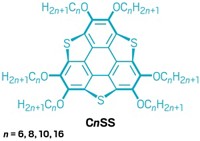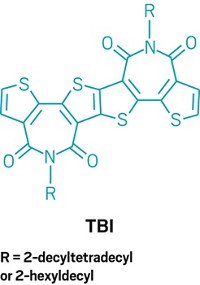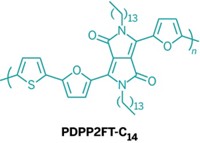Advertisement
Grab your lab coat. Let's get started
Welcome!
Welcome!
Create an account below to get 6 C&EN articles per month, receive newsletters and more - all free.
It seems this is your first time logging in online. Please enter the following information to continue.
As an ACS member you automatically get access to this site. All we need is few more details to create your reading experience.
Not you? Sign in with a different account.
Not you? Sign in with a different account.
ERROR 1
ERROR 1
ERROR 2
ERROR 2
ERROR 2
ERROR 2
ERROR 2
Password and Confirm password must match.
If you have an ACS member number, please enter it here so we can link this account to your membership. (optional)
ERROR 2
ACS values your privacy. By submitting your information, you are gaining access to C&EN and subscribing to our weekly newsletter. We use the information you provide to make your reading experience better, and we will never sell your data to third party members.
Materials
Iminoborane units add inorganic flavor to polymers
Substituting B=N units for C=C units in poly(p-phenylene vinylene) creates inorganic-organic hybrid polymers for electronics applications
by Stephen K. Ritter
February 20, 2017
| A version of this story appeared in
Volume 95, Issue 8
Chemists in Germany have reported a novel inorganic–organic hybrid polymer that can be regarded as an amino borane analog of poly(p-phenylene vinylene), a semiconducting polymer commonly used in light-emitting diodes, field-effect transistors, solar cells, and other optoelectronic devices (Angew. Chem. Int. Ed. 2017, DOI: 10.1002/anie.201612476). Researchers are increasingly taking advantage of the technique of substituting selected C=C units in conjugated organic frameworks with structurally equivalent B=N units to create materials with new properties and functions. Because π-electron conjugation is often disrupted when substituting B=N for C=C, Holger Helten and coworkers of RWTH Aachen University became curious whether they could create a BN analog of poly(p-phenylene vinylene) and whether the polymer’s π-conjugation would persist. The researchers prepared the BN analog, poly(p-phenylene iminoborane), by a polycondensation reaction of boron- and silylamine-disubstituted benzenes. The team’s photophysical studies on the polymer and a series of oligomers provided evidence of π-conjugation across the B=N linkages, although it is less pronounced than for all-carbon poly(p-phenylene vinylene). The Aachen researchers are now further exploring the concept of BN doping of conjugated polymers with an eye toward developing new organic electronics applications.





Join the conversation
Contact the reporter
Submit a Letter to the Editor for publication
Engage with us on Twitter